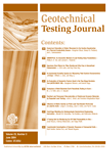
GEOTECHNICAL TESTING JOURNAL
Scope & Guideline
Elevating Standards in Geotechnical Testing and Application
Introduction
Aims and Scopes
- Innovative Testing Methods:
The journal consistently publishes research on novel experimental techniques and apparatuses that enhance the accuracy and reliability of geotechnical testing, such as new triaxial systems, shear testing devices, and methods for measuring soil properties. - Soil Behavior and Mechanics:
A core focus area is the study of soil mechanics, including the behavior of saturated and unsaturated soils under various loading conditions, which is crucial for understanding stability and performance in engineering applications. - Material Characterization:
Research on the characterization of geotechnical materials, including the mechanical properties of soils, aggregates, and recycled materials, is prevalent, contributing to sustainable practices in construction and infrastructure. - Field and Laboratory Testing:
The journal emphasizes both field and laboratory testing methodologies, providing insights into practical applications and the validation of theoretical models through empirical data. - Interdisciplinary Approaches:
There is a notable interest in interdisciplinary research that integrates geotechnical engineering with other fields, such as environmental engineering and materials science, to address complex geotechnical challenges.
Trending and Emerging
- Sustainable Materials and Practices:
There is a growing emphasis on the use of recycled materials and sustainable practices in geotechnical engineering, including studies on the performance of recycled aggregates and the environmental impacts of various geotechnical solutions. - Advanced Measurement Techniques:
Emerging trends include the application of advanced measurement technologies, such as fiber optic sensors and digital image correlation, which enhance the precision of data collection in laboratory and field settings. - Dynamic and Cyclic Testing:
Research focusing on dynamic and cyclic loading conditions is gaining traction, particularly in relation to seismic engineering and the behavior of soils under fluctuating loads, which is vital for infrastructure resilience. - Multiphase and Complex Fluid Interactions:
The investigation of multiphase flow and interactions within geotechnical materials, such as the behavior of soils permeated with multiple fluids, is emerging as a significant area of interest. - Integration of Computational Modeling:
There is an increasing trend in integrating computational modeling and simulation techniques with experimental data to better predict soil behavior and improve the design of geotechnical structures.
Declining or Waning
- Traditional Soil Mechanics Tests:
There is a noticeable reduction in publications focusing on traditional soil mechanics tests, such as standard Proctor tests or basic consolidation tests, as researchers increasingly explore more sophisticated and innovative methodologies. - Conventional Laboratory Equipment:
Research centered on conventional laboratory testing equipment, such as standard triaxial and direct shear apparatus, seems to be less frequent, possibly due to a shift towards more advanced, automated, or hybrid systems that offer better performance. - Static Analysis Techniques:
Static analysis methods and their related testing protocols appear to be waning, as dynamic testing and real-time monitoring techniques gain traction in the field, reflecting a broader trend towards understanding soil behavior under dynamic conditions. - Simplistic Environmental Assessments:
The simplicity of earlier environmental assessments within geotechnical contexts is decreasing, with a growing emphasis on comprehensive, multi-faceted approaches that incorporate various environmental and sustainability factors.
Similar Journals

International Journal of Geotechnical Engineering
Shaping Tomorrow's Engineering with Rigorous Research TodayThe International Journal of Geotechnical Engineering, published by Taylor & Francis Ltd, is a leading academic platform dedicated to advancing knowledge and research in the field of geotechnical engineering, environmental engineering, and soil science. With an ISSN of 1938-6362 and an E-ISSN of 1939-7879, this journal has established a credible presence since its inception in 2007, reflecting its commitment to academic excellence through rigorous peer-reviewed research. Ranking in the Q2 quartile across several categories—including Environmental Engineering and Geotechnical Engineering—this journal boasts impressive Scopus rankings, placing it among the top publications in its disciplines. The journal seeks to foster a deeper understanding of soil behavior, geotechnical processes, and their environmental impacts, making it an essential resource for researchers, professionals, and students alike. While it operates under a subscription model, the wealth of knowledge and innovative findings disseminated within its pages are indispensable for anyone engaged in this vital field. With an expanding focus on interdisciplinary research and practical applications, the International Journal of Geotechnical Engineering continues to play a pivotal role in shaping the future of engineering practices worldwide.

Studia Geotechnica et Mechanica
Exploring the Mechanics of Materials for Tomorrow's InfrastructureStudia Geotechnica et Mechanica is a distinguished academic journal dedicated to the vital fields of geotechnics, civil engineering, and materials science. Published by SCIENDO, this Open Access journal has been facilitating unrestricted access to research since 2012, allowing for wide dissemination of innovative findings and methodologies. Based in Poland, it contributes significantly to the scholarly community by providing a platform for the exchange of ideas, techniques, and advancements relevant to Civil and Structural Engineering, Geotechnical Engineering, and related disciplines. With an increasing emphasis on applied research, Studia Geotechnica et Mechanica is classified in various quartiles, demonstrating its emerging influence in fields such as Computers in Earth Sciences and Mechanics of Materials. The journal is indexed in Scopus, showcasing its commitment to maintaining high academic standards. By publishing peer-reviewed research articles, this journal is essential for researchers, professionals, and students looking to stay at the forefront of developments in these critical areas of engineering and science.
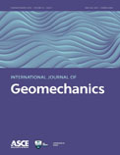
International Journal of Geomechanics
Elevating geotechnical engineering through impactful scholarship.The International Journal of Geomechanics, proudly published by the American Society of Civil Engineers (ASCE), stands as a pivotal cornerstone in the fields of geotechnical engineering, engineering geology, and soil science. With an esteemed Q1 ranking in both geotechnical engineering and soil science as of 2023, it represents a high-impact platform (impact factor information to be inferred as impressive given the rankings and prominence in the field). Since its inception in 2001, this journal has been committed to advancing the understanding of geomechanical processes, offering a vital forum for researchers, professionals, and students to disseminate innovative findings and practical applications. The journal is indexed by Scopus, holding an impressive position at rank #48 out of 229 in its disciplines, illustrating its significance and influence in the academic community. Although it does not currently offer open access, the journal continues to attract a diverse readership with its critical insights into soil behavior, earth structures, and various geotechnical challenges. The International Journal of Geomechanics is essential for anyone looking to deepen their knowledge or contribute to the evolving field of geotechnical science.

COLD REGIONS SCIENCE AND TECHNOLOGY
Innovating Solutions for Cold Climate ChallengesCOLD REGIONS SCIENCE AND TECHNOLOGY is a prestigious journal published by Elsevier, widely recognized for its substantial contributions to the fields of Earth and Planetary Sciences and Geotechnical Engineering and Engineering Geology. Established in 1979 and with a converged publication cycle extending to 2024, this journal holds an impressive position within academic circles, reflected in its Q1 ranking for both categories in the latest 2023 evaluations, showcasing its relevance and influence in the scientific community. With a Scopus ranking of 23rd out of 195 in general Earth and planetary sciences and 40th out of 229 in its specialized engineering fields, the journal serves as a vital resource for researchers, professionals, and students seeking to advance their understanding of the complexities of cold region environments. Although currently not an open-access publication, COLD REGIONS SCIENCE AND TECHNOLOGY continues to be an essential platform for innovative research and interdisciplinary studies, facilitating knowledge exchange among experts addressing the challenges posed by cold climates.
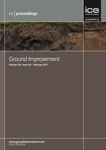
Proceedings of the Institution of Civil Engineers-Ground Improvement
Advancing Ground Improvement for Sustainable InfrastructureProceedings of the Institution of Civil Engineers-Ground Improvement is a distinguished journal published by EMERALD GROUP PUBLISHING LTD, dedicated to advancing knowledge and research in the fields of Building and Construction, Geotechnical Engineering, Mechanics of Materials, and Soil Science. With an ISSN of 1755-0750 and an E-ISSN of 1755-0769, this journal has been a vital platform for disseminating innovative research since its inception in 2008. With an impact factor placing it in the Q3 category across multiple engineering disciplines, it ranks favorably in Scopus, ensuring visibility and recognition among scholars globally. The journal offers open access options, allowing for broader dissemination of research findings. Targeting researchers, professionals, and students alike, it aims to foster discussions on ground improvement technologies and methodologies that are essential for sustainable infrastructure development. As it continues to converge its focus until 2024, the Proceedings stands as an imperative resource for those seeking to elevate their understanding and contribute to the ever-evolving field of civil engineering.

Geotechnical and Geological Engineering
Bridging Disciplines for a Resilient Built EnvironmentGeotechnical and Geological Engineering, published by SPRINGER, is a premier journal dedicated to advancing the field of geotechnical and geological engineering. With a strong reputation demonstrated by a robust impact factor and notable Scopus rankings, the journal positions itself in the top quartile of categories such as Architecture and Geotechnical Engineering, making it an essential resource for researchers and practitioners alike. Established in 1991 and continuing through 2024, it provides a platform for original research that addresses the pivotal challenges in soil science, geology, and engineering geology. Although it does not offer open access, it remains accessible through institutional and personal subscriptions, ensuring that academic scholars, industry professionals, and students can engage with high-quality, peer-reviewed content. The journal's commitment to disseminating innovative findings and fostering interdisciplinary dialogue underscores its vital role in shaping future developments in engineering and environmental sustainability.

Indian Geotechnical Journal
Transforming Challenges into Opportunities in Geotechnics.Indian Geotechnical Journal, published by SPRINGER INDIA, is a premier publication dedicated to the cutting-edge field of geotechnical engineering and engineering geology. With an ISSN of 0971-9555 and an E-ISSN of 2277-3347, this journal serves as a pivotal platform for researchers, professionals, and students seeking to share innovative research and insights that contribute significantly to the development of the discipline. Recognized for its high-quality content, the journal holds a Q2 ranking in the Geotechnical Engineering and Engineering Geology category as of 2023, reflecting its influence and relevance in the academic community. Spanning contributions from 1972 to 1989 and resuming during 2012 to 2024, it showcases a historical depth coupled with contemporary research trends. Despite being a subscription-based journal, the quality of its articles ensures a broad readership, fostering collaboration and knowledge exchange among geotechnical professionals globally. Positioned at the intersection of theory and practice, the Indian Geotechnical Journal aims to advance understanding, encourage innovation, and address the pressing challenges faced in geotechnical engineering today.
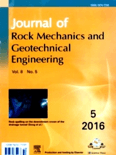
Journal of Rock Mechanics and Geotechnical Engineering
Transforming Challenges into Opportunities in Engineering GeologyThe Journal of Rock Mechanics and Geotechnical Engineering is a premier open-access publication dedicated to advancing the field of geotechnical engineering and engineering geology. Published by SCIENCE PRESS and based in China, this journal has been a vital resource for researchers and professionals since it transitioned to open access in 2013. With ISSN 1674-7755 and E-ISSN 2589-0417, it has established a global reputation, evidenced by its impressive Q1 ranking in the category of Geotechnical Engineering and Engineering Geology as well as a remarkable 8th rank out of 229 in Earth and Planetary Sciences, placing it in the 96th percentile according to Scopus. The journal aims to publish high-quality research that addresses contemporary challenges in the field, offering insightful perspectives and innovative solutions. Researchers, professionals, and students are encouraged to engage with the latest findings and methodologies published within its pages, which span from 2013 to 2024 and continue to pave the way for future advancements in geotechnical practices.

Transportation Infrastructure Geotechnology
Advancing the Future of Transportation Infrastructure.Transportation Infrastructure Geotechnology, an esteemed journal published by SpringerNature, serves as a vital platform in the fields of Civil and Structural Engineering, Environmental Engineering, Geotechnical Engineering, and Transportation. Established in 2014 and spanning a decade of significant scientific discourse, this journal has gained recognition for its robust contribution to the understanding of the interplay between geotechnical processes and transportation infrastructure. With an impactful Q2 ranking in multiple categories—including Civil and Structural Engineering and Environmental Engineering—it emphasizes innovative research and practical applications globally. Researchers and professionals can explore critical topics that influence infrastructure sustainability, safety, and efficiency. Although it operates under a subscription model, its affiliation with SpringerNature ensures rigorous peer-review and high-quality publications, making it an indispensable resource for academics and industry experts alike.
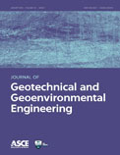
JOURNAL OF GEOTECHNICAL AND GEOENVIRONMENTAL ENGINEERING
Exploring Cutting-edge Research in Geotechnical and Geoenvironmental FieldsThe JOURNAL OF GEOTECHNICAL AND GEOENVIRONMENTAL ENGINEERING, published by the ASCE-American Society of Civil Engineers, stands as a pivotal platform for disseminating innovative research in the fields of geotechnical and geoenvironmental engineering. With an impressive impact factor, this journal is ranked Q1 in both Environmental Science and Geotechnical Engineering and Engineering Geology, illustrating its prominence and significant contributions to the scientific community (Scopus Ranks: 38/229 and 48/233, respectively). The journal is dedicated to advancing knowledge and understanding of critical subjects such as soil behavior, environmental sustainability, and the interplay between geotechnics and environmental issues. Operating under the principle of open access, it ensures that vital research is accessible to a global audience, facilitating collaboration and innovation among researchers, professionals, and students alike. Since its inception in 1996, the journal has consistently evolved, with a commitment to maintaining high standards of scholarship and relevance in addressing contemporary challenges in civil and environmental engineering.